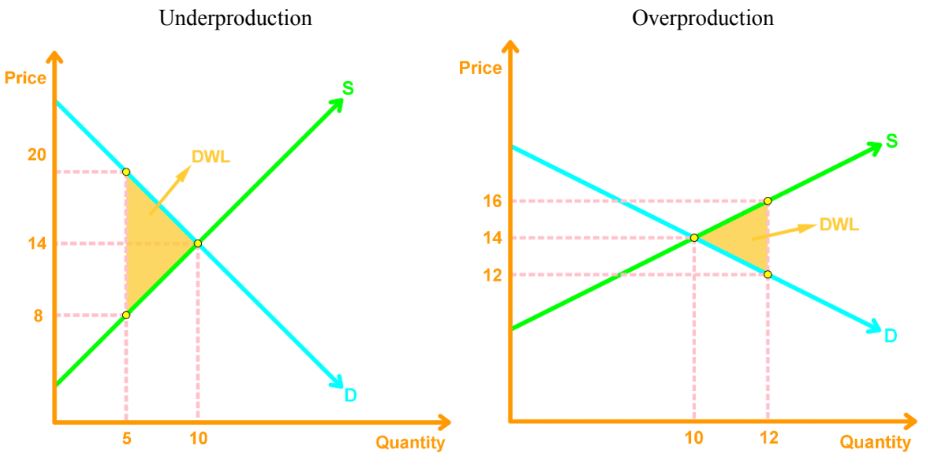Market Failure
Market failure is a scenario in which the allocation goods and services are not efficient. This happens when there are too little items produced (underproduction), or when too much items are produced (overproduction).
Deadweight Loss: is the decrease in total surplus from the inefficient level of production.

Once again, deadweight loss are mostly triangles, and can be calculated using the formula:
Sources of Market Failure/Deadweight Loss
Price & Quantity Control: limiting the amount of quantity produced or putting a cap on prices can block adjustments to market equilibrium, which leads to underproduction.
Taxes: increases the prices paid by buyers, and lowers the prices received by sellers. So, sellers decide to sell less of the item, which causes an underproduction.
Subsidies: lowers the price paid by buyers, and increases the prices received by sellers. Hence, sellers decide to sell more of the item, which causes an overproduction.
Externalities: a cost or benefit that affects someone other than the buyer or seller.
- When suppliers/producers do not consider external costs that doesn’t affect them, they overproduce.
- When buyers do not consider external benefits, there is an underproduction.
Public Goods: A public good benefits everyone in the society, but not everyone wants to pay for it. Instead, people avoid paying for it, causing an underproduction.
Common Resources: resources that are owned by no one, but can be used by everyone. Everyone’s self interest is to use the resource as much as possible, while ignoring the costs that fall on others. This leads to overproduction.
Monopoly: a firm that is the only provider of a good or service. In this case, firms tend to maximize profit by setting the price beneficial for them, and limiting the quantity sold. This leads to underproduction.






